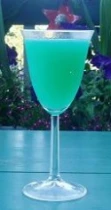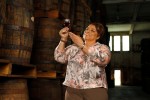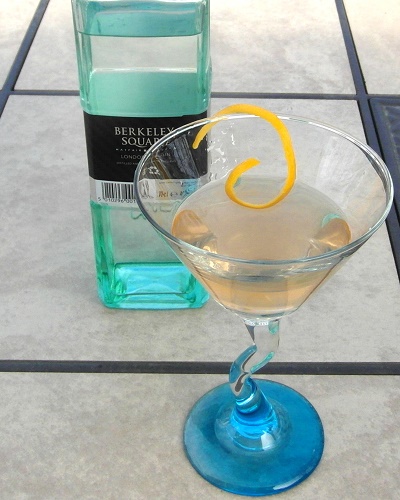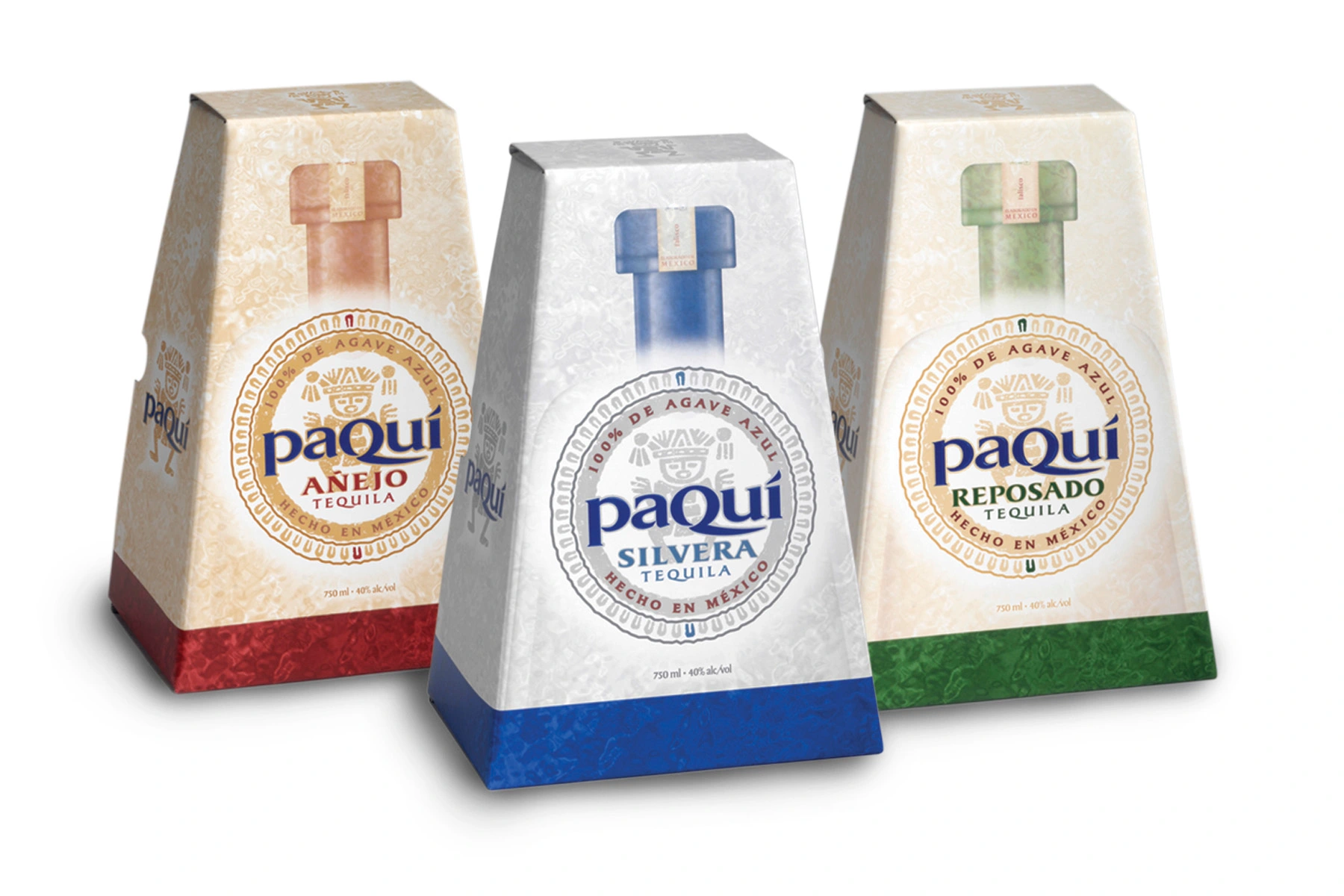Glenfarclas 105 Cask Strength Highland Single Malt Whisky
Review: Glenfarclas 105 Cask Strength Single Malt Whisky 87.5/100
a review by Chip Dykstra (Aka Arctic Wolf)
Posted January 26, 2012
The Glenfarclas Distillery is located on the Recherlich Farm at Ballindalloch in the heart of Speyside. The Distillery was purchased by the Grant Family in 1865 for a total sum of £511.19sd. It has remained in the control of the Grant Family for six generations up to the present day. In fact, Glenfarclas is one of only a few distilleries remaining in Scotland which is independently family owned and managed.
All of the Glenfarclas Whisky is matured in two styles of oak barrels, plain oak barrels which have previously contained Bourbon or Scotch whisky, and Spanish oak which has previously contained Oloroso or Fino Sherry from Seville. The whisky is stored in traditional ‘dunnage’ warehouses that date from the late 1800s. These warehouses have thick stone walls and earthen floors. The Glenfarclas 105 Cask Strength has no age statement on the bottle. However, I note that on the Glenfarclas website it is mentioned that all of their whisky is aged at least eight years. Glenfarclas blends this whisky from mature barrels to be a consistent 60 % alcohol by volume with no added water.
I was provided with a 375 ml sample of the Glenfarclas 105 Cask Strength by Pacific Wine & Spirits Inc. who are the importer/distributor of Glenfarclas Highland Single Malt Whisky in Alberta.
 In the Bottle 4.5/5
In the Bottle 4.5/5
Pictured to the left is the bottle presentation for the Glenfarclas 105 Cask Strength Highland Single Malt Whisky. The reference on the label to the whisky as a ‘Highland Malt’ is rather confusing to many persons as this whisky is referred to by most sources as a Speyside, not as a Highland Whisky. However, I have learned that whisky from Speyside has historically been considered Highland Whisky. This is because there were originally only four official whisky regions identified in Scotland, Highland, Lowland, Campbeltown and Islay. Given that Speyside is home to the greatest concentration of distilleries in Scotland, it later was decided that Speyside deserved its own status as a region. Thus a Speyside whisky is a Highland whisky and a Speyside whisky.
Setting this aside, I like the whisky presentation. I like the dark cardboard sleeve the whisky is housed in, and I like the rather masculine shape of the Glenfarclas bottle with its corked top. I would like a little more information on the label with respect to the taste profile of the whisky, as in my market, there exists a great deal of angst amongst consumers when they are selecting a Scotch Whisky. Giving the potential consumer some indication of the flavour profile ahead of the purchase decision would be a good thing. I have noticed that all of this information is available on the Glenfarclas website, included tasting notes for their entire range. I think it would be a good idea if tasting notes were included on the cardboard sleeve that houses the whisky.
In the Glass 9/10
Once poured into the glass, the whisky is a coppery amber colour with hints of inky blackness within. When I tilted my glass and gave it a slow swirl, I noticed the whisky imparted rather thickish legs which ran slowly back down into glass. The initial aroma is cloaked by an alcohol push which results from the 60 % bottling strength, However if you let the glass breathe, and allow the initial astringency to evaporate, the scents and smells left in the breezes are rich and assertive.
Above the glass I smell caramelized toffee, dark fruity sherry, and some hints of organic peat. (I should point out that information presented to me at a recent tasting event hosted by George Grant of Glenfarclas indicated that the Glenfarclas Whiskies are not peated, yet my nose cannot deny what it senses.) As the glass breathes, the toffee begins to ooze chocolate and baking spices, and the fruity sherry aroma deepens to reveal dates, raisins and juicy plums. There is a bit of a woodland bog in the glass as well with spruce trees, willow thickets, saw grass and heather in the air above the glass. The overall aroma is deeply complex and inviting.
In the Mouth 52/60
The Glenfarclas 105 Cask Strength is bottled at 60 % alcohol by volume and thus has a full 50 % more alcohol than the usual 40 % bottlings I am used to. This means the flavours are more concentrated and the bite the whisky carries is far stronger. Sipping the whisky at full strength is a challenge, but it is also a pleasure. The sherry comes through very clearly on the palate with fruity flavours of dark fruit (plums and raisins). Sweet toffee and hints of chocolate add a nice layer to the whisky, and rounding out the flavour is a nice firm oakiness which carries a dollop of floral peat.
I added a little water to the glass, and the whisky turned cream, and that alcohol punch seemed to evaporate into the glass. The intense flavour seemed to be knocked down a notch or two. Although the whisky is much easier to drink with the added water, I found myself preferring the punchy flavour and intensity of the undiluted dram.
In the Throat 13/15
The Glenfarclas 105 Cask Strength Whisky is not for the timid. It swats at the tonsils and kicks at the palate as you sip and swallow. Having said that, the burn in the throat is not severe. The whisky warms the gullet and leaves a sort of spicy aftertaste tinged with fruity sherry flavours behind.
The Afterburn 9/10
Just for the record, I like over-proof or should I say ‘cask strength’ whisky and rum, and so the Glenfarclas 105 Cask Strength is right up my alley. Not only is the alcohol content stronger in cask strength whisky, but flavours and the aroma are also richer and more concentrated. This gives me more versatility when I consume the whisky such that I might find my own sweet spot of flavour and intensity. I can enjoy the spirit in its strongest form or I can add a little water (or a lot) to suit my particular mood at the time. For this whisky, my sweet spot turned out to be full strength with no added water. (I really like the rich flavours and the intensity of the alcohol push.) I think it is a great whisky, especially when the Canadian weather has turned bitterly cold!
You may read some of my other Whisky Reviews (click the link) if you wish to have some comparative reviews.
_________________________________________________________________________________________________________________
As always you may interpret the scores I provide as follows.
0-25 A spirit with a rating this low would actually kill you.
26-49 Depending upon your fortitude you might actually survive this.
50 -59 You are safe to drink this…but you shouldn’t.
60-69 Substandard swill which you may offer to people you do not want to see again.
70-74 Now we have a fair mixing rum or whisky. Accept this but make sure it is mixed into a cocktail.
75-79 You may begin to serve this to friends, again probably still cocktail territory.
80-84 We begin to enjoy this spirit neat or on the rocks. (I will still primarily mix cocktails)
85-89 Excellent for sipping or for mixing!
90-94 Definitely a primary sipping spirit, in fact you may want to hoard this for yourself.
95-97.5 The Cream of the Crop
98+ I haven’t met this bottle yet…but I want to.
Very loosely we may put my scores into terms that you may be more familiar with on a Gold, Silver, and Bronze medal scale as follows:
70 – 79.5 Bronze Medal (Recommended only as a mixer)
80 – 89.5 Silver Medal (Recommended for sipping and or a high quality mixer)
90 – 95 Gold Medal (Highly recommended for sipping and for sublime cocktails.)
95.5+ Platinum Award (Highest Recommendation)








Ryan said
Hi Chip, I am curious about the difference between Glenfarclas 105 and Macallan Cask Strength. In your Mac CS review, it sounds like the high strength is too much, but here, it sounds like you enjoy it. Has your palate evolved between these two whiskies, or is there something else that makes the Macallan too intense? I am just curious because I will probably be trying out one of these or Aberlour A’bunadh sometimes in the near future.
Also, I’m pretty sure that Glenfarclas uses some peat, though I can’t say whether they make an exception for some whiskies such as the 105.
Arctic Wolf said
Hi Ryan
The difference (I believe) is in the richness of the sherry cask influence and the age of the Oak Casks selected for maturation. I believe that for this particular bottling (The Glenfarclas Cask Strength), the percentage oak which is first fill Sherry Cask in the final blend is about 60 % with the other 40 % being refill bourbon casks. However in the Macallan Cask Strength, the percentage of whisky matured in First fill Sherry Cask oak is I believe 100 %. The Macallan Sherry Cask line-up is really rich with sherry flavours, and the Cask Strength is almost overwhelming.
As well, if my memory serves me well, the Macallan uses only young oak for the maturation of the Sherry Cask series. (The back of there box says oak which has been seasoned with aged Sherry for 2 years). 2 year old oak casks will have a lot of oak flavour, that they are imparting into the whisky. The Glenfarclas whisky uses a variety of Oak casks. In fact I was told that they will reuse a cask up to 6 times, or for up to 40 years. I am not suggesting that ancient oak would be used in the Cask Strength, but it is conceivable to me that oak barrels that are 10 to 20 Years Old will be reused, and a percentage of the Glenfarclas 105 will be blended from those barrels.
Arctic Wolf said
And on the issue of peat, I met George Grant last week (Sixth Generation George Grant whose family owns the Distillery or most of it anyway). Mr Grant made specific reference to the fact that the distillery uses no peat in the production of Glenfarclas Whisky.
Ryan said
Thanks for the responses, very informative! I noticed that the standard bottling of Macallan 12 is rather hot and spicy (in a good way) – almost bourbony – and maybe this also is attributed to the use of relatively new oak.
I’m pretty confused about the peat. On Glenfarclas’ website, they mention adding peat smoke during the malting process, though I guess with their wording they do not explicitly say that they add peat, but talk about where peat would be added. I interpret that as peat is added. Also, I have sampled the Glenfarclas 10, I am dumbfounded that there is no peat. There’s a fairly substantial peat presence there, with ashy cigar smoke finish. So, I don’t doubt your conversion with Mr. Grant, however, I’m confused! Where’d the smoke come from? That’s a rhetorical question by the way, unless you actually have an answer…
Arctic Wolf said
I understand your confusion especially as the section you are referring to strongly implies that they use peat smoke, but does not specifically say so. I am going to email the distillery for clarification, but I honestly do not know if they will respond. (They probably get dozens and dozens of emails a day and who knows how many they get to.)
As for your question I have theories but not answers. I have noticed that sherried whiskies often taste very smoky to me, and I often refer to sherry smoke in my reviews. As well, I note that the Glenfarclas Valley is rich in heather which grows abundantly on the hillsides. Mr Grant also referred to the peat which lies under this heather in his discussions. Perhaps, and I am really stretching here, but perhaps, we have a bit of a combination of affects. Sherry smoke, combined with heather and peat on the hillsides might be influencing the taste of the whisky in a way which reminds us when we taste it of peated whisky. (I have been told that the heather growing on the hillsides near aging warehouses actually can impart a touch of heather into the flavour profile of the aging whisky.)
thebitterfig said
In a whiskycast interview with George Grant almost five years ago (ep. 102, July 29, 2007), Mr. Grant said there was a slight amount of peat used, something like 3ppm. I don’t really remember the exact level. By way of comparison, Bowmore is around 25ppm, Laphroiag is around 40ppm, and Ardbeg is around 55ppm.
Arctic Wolf said
Great news which I hope clears up the confusion, as it turns out everybody is right!
I emailed George Grant, the Global Brand Ambassador, and part of the sixth generation of the family of Grants which own and manage the Glenfarclas Distillery. And the following was his reply:
Chip
Great to meet you (in Edmonton recently). Glenfarclas is completely unpeated.
However even by malting barley you get a ppm of 1-3ppm which is apparent in cask strength unfiltered whisky.
Feel free to ask any questions.
Slainte
George
It’s great to get to the bottom of the mystery, and I am relieved that we all can share the credit for getting it right.
Cheers Everyone!
Kevin said
I have tried the Glenfarclas 10 year and 12 year old. The 10 I got in Hong Kong for the equivalent of 18 bucks which was a good buy. Both were fairly tasty ( I preferred the 10) but not worth the money you pay here in Canada. In general Scotch whiskeys are grossly overpriced for the quality. This is why I have basically completely shifted to drinking Canadian whiskey or bourbon
( If I can get it in the US) and the odd Irish whiskey (Redbreast 12). In my mind Canadian whiskies offer unbeatable value.
Arctic Wolf said
I have noticed that a lot of the Single Malt Whiskies are priced much better today than they were a few years ago. I hope that trend continues although I have not let the current pricing dissuade me from purchasing a few of my favourites. As for the Value of Canadian Whisky, I couldn’t agree more.
Kevin said
I am not sure about this trend in Ontario, Chip. You can’t get a decent single malt Scotch for under $42 here. I don’t like the blends very much they tend to be thin with no complexity or finish. I have tried many. That said if some people have found ones they love, that’s great.